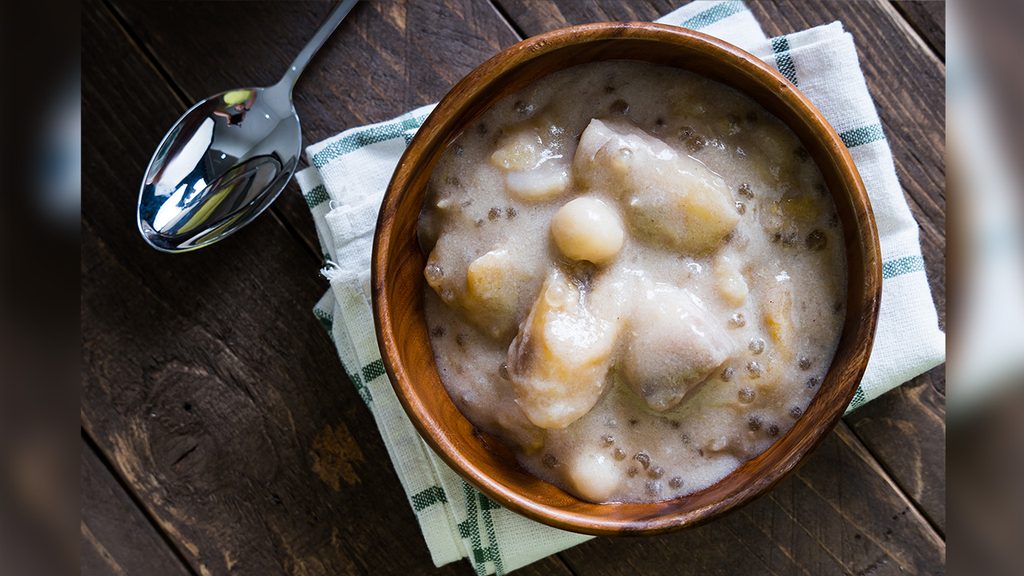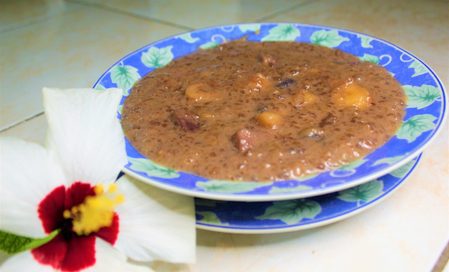SUMMARY
This is AI generated summarization, which may have errors. For context, always refer to the full article.

GENERAL SANTOS, Philippines – Binignit – tabirak in Northern Mindanao, ginataan and bilo-bilo in Luzon, and many other names – is a popular Holy Week staple in the Philippines.
It is a simmering fusion of sticky rice, fruits, tubers, and tapioca pearls cooked in coconut milk.
Despite the countless seasons of Lent and the tons of binignit consumed, many people still wonder why this mouth-watering and tongue-scalding sweet stew is most sought-after during the warmest season of the year in the Philippines.
General Santos food caterer Roxanne Alemania said binignit is a comfort food to many people, Catholic devotees or not.
But what makes it comforting when you have to endure eating it hot at a time when temperatures are rising?
“It could be that eating hot binignit is a form of sacrifice disguised as comfort food,” she quipped.
Alemania said the binignit has the same basic ingredients as the favorite summertime dessert halo-halo.
“Take away the coconut milk, put in regular milk, let it cool, add ice shavings, and presto, you have a refreshing halo-halo!” Alemania pointed out, laughing.
Annie Tuazon, a housewife and mother of five who loves to cook local delicacies, said there is an element of sacrifice in cooking binignit.
She explained that preparing a really good binignit requires a lot of energy, from gathering ingredients to preparing the coconut milk and the strenuous hand-mixing.
In the old days, people had to climb coconut trees to get matured nuts, remove their husks, break them in half, and ride a coconut grater to scrape out the meat.
Alemania said cooking binignit also connects people to their past and serves as a reminder that those who handed down the heirloom recipes, from elderly aunts and mothers, each had their own way of preparing the sweet stew.
Typically, binignit is made with saba bananas, gabi (taro), kamote (sweet potato), jackfruit, tapioca pearl, landang glumps, coconut milk, and glutinous rice.
But the ingredients vary in every locality and place where it is prepared, giving the dish different colors and textures.

Binignit has no meat ingredient, making it the perfect food to have during the period of Holy Week abstinence, especially in the Philippines where serving meat is seen by many as a no-no.
Even during Ramadan, Muslims in the Maguindanao provinces have their version of the binignit, which they call sindol.
Like binignit, sindol is cooked with coconut milk, saba banana slices, corn, tapioca, and jackfruit.
Bangsamoro-based journalist Assam Ulangkaya said most Moro families find time to have meals together during Ramadan to strengthen their kinship, and they do this with sindol during Suhoor (pre-dawn meal) or Iftar (meal to break the day’s fast).
“Whether it is binignit, tabirak, ginataan, bilo-bilo, or sindol, it is a comfort food because it comforts the soul and mind,” Ulangkaya said. – Rappler.com
Add a comment
How does this make you feel?


































There are no comments yet. Add your comment to start the conversation.